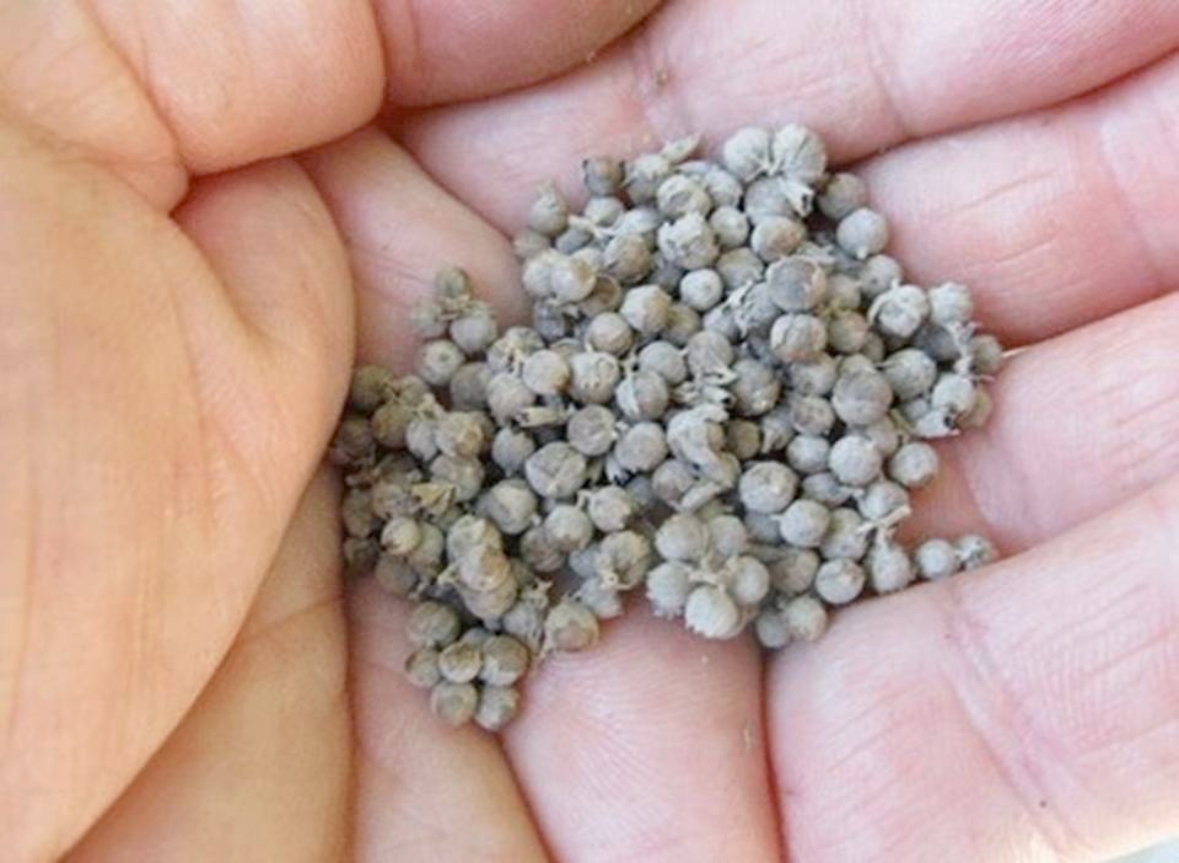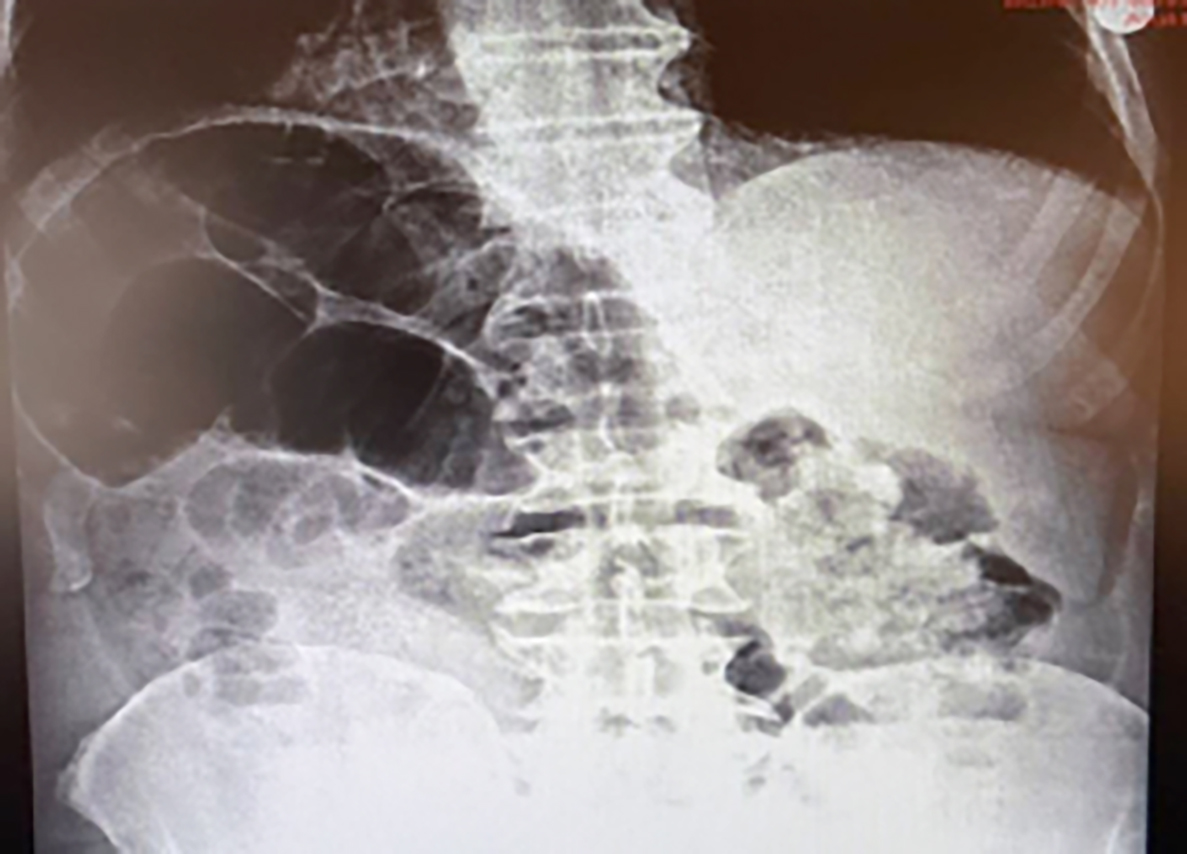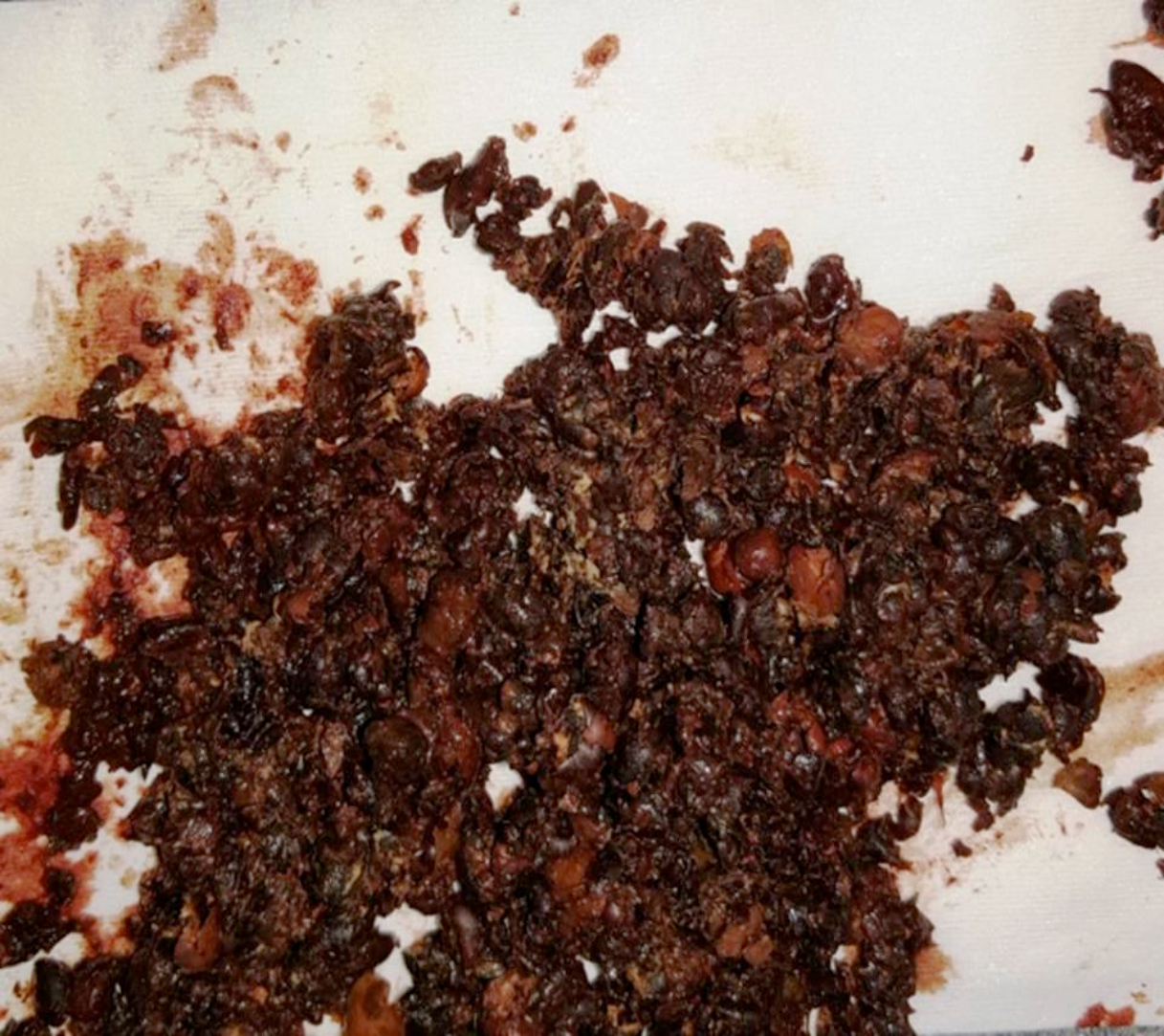Colonic Obstruction Secondary to Phytobezoar Caused by Vitex Agnus-Castus Seeds: A Case Report
By Erkan Somuncu, Ismail Hakki Alp SolakAffiliations
doi: 10.29271/jcpsp.2022.08.S115ABSTRACT
Plant seeds of Vitex agnus-castus (chaste berry) are known for benefits in reproductive health and also reduce bloating, depression, headache, and constipation. Plant seeds are a rare cause of phytobezoars. Bezoar is a formation of mass by piling up of material that is ingested but not digested or partially digested at any level of the gastrointestinal tract. While swallowed material mostly forms a bezoar in the stomach, it can rarely reach the colon and cause obstruction or perforation. Bezoars causing colonic obstruction can be treated by medical observation, endoscopic intervention, or surgical procedure. Herein, we present a case of colonic obstruction secondary to bezoar composed of plant seeds of Vitex agnus-castus and our approach to this condition.
Key Words: Chaste berry, Vitex agnus-castus, Phytobezoar, Colonic obstruction.
INTRODUCTION
Bezoar is the formation of a mass by piling up ingested herbal, animal, or synthetic material that is either not digested or inadequately digested. There are many types of bezoars classified according to their composition: Phytobezoars, diospyrobezoars, trichobezoars, pharmacobezoars, lactobezoars and foreign body bezoars. A rare and special type is a seed bezoar. Although bezoars due to swallowed objects are formed mostly in the stomach, cases with colonic location are also reported.1
Vitex agnus-castus (chaste berry) is a tree with purple blossoms which grows in warm climates. It is known for its benefits on women’s reproductive health. Its seed is used for regulating menstruation, aiding childbirth, and relieving menopausal problems throughout history. There are studies showing its efficacy in premenstrual syndrome and cyclic mastalgia. Chaste tree seed balances hormone production by affecting hypophysis. Thus, it is contained in many hormones regulating drugs and in commonly used as tea. There is some scientific evidence that chaste berry may reduce bloating, depression, headache, and constipation. In addition, it is also used in men to increase urine flow, treat benign prostatic hyperplasia (BPH), and reduce sexual desire.2,3
In this case report, we aim to present our diagnostic and therapeutic approach in a patient who presented with colonic obstruction caused by chaste berry seed consumed as food.
CASE REPORT
A 63-year male was admitted to the emergency room with two days’ history of inability to defecate and discharge gas in addition to nausea, vomiting, abdominal distension, and abdominal pain. He gave a history of eating plant seeds shown in Figure 1.
 Figure 1: Dry chaste berry seeds.
Figure 1: Dry chaste berry seeds.
On abdominal examination, there was tenderness and rebound in all quadrants. On digital rectal examination, the rectal ampulla was full of plant seeds, taken as food by the patient. Anal dilatation with a finger was performed and lot of partially digested plant seed material was extracted from the rectal ampulla. Gas-fluid levels were seen in plain abdominal X-ray as seen in Figure 2.
 Figure 2: Plain abdominal x-ray on admission showing a few gas-fluid levels.
Figure 2: Plain abdominal x-ray on admission showing a few gas-fluid levels.
The patient was admitted to the general surgery ward. Colonoscopy was performed after bowel preparation. Undigested plant seeds were seen in places but no bezoar was found as seen in Figure 3. No space-occupying mass was seen in all colonic segments. Swelling of the intestinal wall was seen in the rectosigmoid region. Biopsy from this region was obtained to rule out inflammatory bowel disease. There were no complications throughout the procedure.
Gastrointestinal decompression was achieved by both bowel preparation and colonoscopy. Abdominal pain and swelling regressed. The patient was able to pass gas and stool on the first day after colonoscopy. He was observed for two more days. General condition and biochemical profile were normal. He was discharged with advice for a follow-up visit after five days with colonoscopic biopsy results.
 Figure 3: Partially digested chaste berry seeds extracted from patient’s colon.
Figure 3: Partially digested chaste berry seeds extracted from patient’s colon.
DISCUSSION
The material composing the bezoars is ingested either unintentionally by persons with psychological disorders or healthy individuals without thinking of effects or side effects. Patients usually present in the emergency room with nausea, vomiting, long-lasting constipation, severe abdominal pain etc. after ingesting these materials. In some cases, complaints of the patient could be relieved with observation and simple procedures; some cases require endoscopic intervention or surgical procedures.4
Although the most common site of bezoar formation is stomach, they can be formed anywhere in the digestive tract. Colonic bezoars are very rare; however, they can cause severe mechanical obstruction.5
In a systematic review published in 2020, seed bezoar cases reported between 1980- 2018 were collected. The most common seeds ingested were watermelon and sunflower seeds, and the most common presentations were constipation, abdominal pain, and intestinal obstruction. 78% of bezoars were located in the rectum and 16% in the terminal ileum. Common treatment was manual emptying (69%), and surgery was needed in 22% of cases. Seed bezoars differ from phytobezoars by their tendency to localize in the colon. The same review found that nearly 80% of seed bezoar cases were reported from East Mediterranean and Middle East countries.6
Colonic bezoars causing mechanical obstruction can be detected radiologically. Plain abdominal x-ray in emergency room can reveal colonic gas-fluid levels and shape and size of bezoar if it is made of radio-opaque material. Yet plain x-ray is not as successful as computerized tomography (CT) in imaging gastrointestinal system. CT is used effectively in imaging bezoars and related complications.7
Treatment of bezoar cases differs by their location in gastrointestinal tract. As stomach, duodenum, and colon can be accessed by endoscopy, bezoars in these sites can be intervened endoscopically aside from medical treatment. Injection of bezoar breaking material or direct extraction of bezoars could be possible. Complicated bezoars in jejunum and ileum, or bezoars that could not be managed conservatively may require surgical intervention. Gastric, duodenal, or colonic bezoars that are complicated or could not be extracted endoscopically may require surgery as well. In colonic bezoars, obstruction can be relieved by colonic purgatives and enemas and also by anal dilatation and extraction with finger. Endoscopic or surgical procedures should be considered in failed attempts and complicated cases.8
In conclusion, though colonic bezoars are very rare, they remind physicians of the need to obtain a good medical history from the patient. Asking about commonly used herbal remedies and unusual dietary habits, which are not shared with physicians, is an important step in the diagnosis. Plant seeds are not the first thing to come to mind in a case of colonic obstruction.
PATIENT'S CONSENT:
Informed consent was obtained from the patient.
COMPETING INTEREST:
The authors declared no competing interest.
AUTHORS’ CONTRIBUTION:
ES: Design of the manuscript, analysis of data for the manuscript, literature search, drafting and revising the intellectual content of the manuscript, final approval, agreement to be accountable for all aspects of the manuscript.
IHAS: Design of the manuscript, drafting and revising the intellectual content of the manuscript, final approval, agreement to be accountable for all aspects of the manuscript.
REFERENCES
- Erdemir A, Agalar F, Cakmakci M, Ramadan S, Baloglu H. A rare cause of mechanical intestinal obstruction: Pharmacobezoar. Turk J Sur Ulusal Cerrahi Derg 2015; 31(2):92. doi: 10.5152/UCD.2014.2749.
- Csupor D, Lantos T, Hegyi P, Benko R, Viola R, Gyongyi Z, et al. Vitex agnus-castus in premenstrual syndrome: A meta-analysis of double-blind randomised controlled trials. Complement Ther Med 2019; 47:102190. doi: 10.1016/j. ctim.2019.08.024.
- Ooi SL, Watts S, McClean R, Pak SC. Vitex agnus-castus for the treatment of cyclic mastalgia: A systematic review and meta-analysis. J Womens Health (Larchmt) 2020; 29(2): 262-78. doi: 10.1089/jwh.2019.7770.
- Habibi M, Demirci E, Demirci R, Bulbuller N. Colonic bezoar caused by cracked-wheat consumption. Saudi Medical J 2015; 36(2):252. doi: 10.15537/smj.2015.2.10094.
- Şenol M, Ozdemir ZU, Şahiner IT, Ozdemir H. Intestinal obstruction due to colonic lithobezoar: A case report and a review of the literature. Case Rep Pediatrics 2013; 2013. doi: 10.1155/2013/854975.
- Manatakis DK, Acheimastos V, Antonopoulou MI, Balalis D, Korkolis DP. Gastrointestinal seed bezoars: A systematic review of case reports and case series. Cureus 2019; 11(5):e4686. doi: 10.7759/cureus.4686.
- Dikicier E, Altintoprak F, Ozkan OV, Yagmurkaya O, Uzunoglu MY. Intestinal obstruction due to phytobezoars: An update. World J Clin Cases 2015; 3(8):721. doi: 10.12998/wjcc.v3.i8.721.
- Iwamuro M, Okada H, Matsueda K, Inaba T, Kusumoto C, Imagawa A, et al. Review of the diagnosis and management of gastrointestinal bezoars. World J Gastr Endos 2015; 7(4):336. doi: 10.4253/wjge.v7.i4.336.